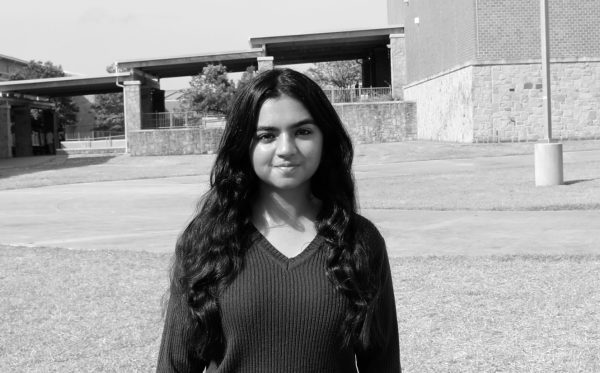Since the popularity spike of ChatGPT last November, generative Artificial Intelligence has stepped out of the spotlight and become a reality of life. Vandegrift teachers have attempted to find ways to make the most of the technological advancement while continuing to promote original student work.
“I use it to help [generate] lesson plans,” Irad Allen, computer science teacher, said. “I [also] use it [to make] templates [for] compos[ing] emails for parents when I have to contact them. [Other than that], I’ve used it for writing things that go to our general organization for robotics.”
Like Allen, Katie Kendall, Capstone teacher, has found AI helpful in her classroom. She believes AI can be used by students, to a certain extent.
“I think it is helpful for a couple of things,” Kendall said. “I think [when] searching up in Google, you [won’t] get subtopics as explicitly. [AI] will tell you the key ideas and keywords that I think are helpful.”
By providing subtopics, Kendall believes AI can help with brainstorming and research question development. Through selectively creating in-class assignments for weighted grades, Kendall has been able to manage the unethical use of AI. Allen, on the other hand, has difficulty with the same.
“Unfortunately, in computer science classes, it is impossible to tell [if a student has used AI]. That is one of the reasons why I don’t like it for use in our classrooms. I think it is great for other classrooms, but in our classrooms, someone can take any of our labs, drop it into ChatGPT, and it’ll kick out code that looks exactly like what I would teach.”
For Allen, detecting the use of AI in computer science classrooms limits the potential for ethical use to help, for instance, with drafting software proposals. Since Kendall works with written work and essays, she has formulated a process and has strategies to detect unauthorized AI use.
“For a paper, it is not only having the paper itself but having the annotated bibliography as well as knowing the student’s writing and being well versed with their writing style,” Kendall said. “But this could be said for art, where the art instructor could detect this based on knowing the student’s work to this point and knowing what was included in the drafts before the final.”
With her eight-step process, Kendall is usually able to detect unauthorized AI use by students. Thus, Kendall does not require a complete ban on AI as there is a higher scope for ethical use.
“For me, it could be within bounds if it is helping the student with idea development and better writing. If it is helping with ideas rather than giving them ideas,” Kendall said. “Any time the student is taking the idea from AI and passing it off on their own, that is always out of bounds.”
While teachers debate the ethical use of AI in their classrooms, the school, as a whole, has had some difficulty with it.
“This year, I think we are in a better space just because we have some of those policies and procedures in place,” Kendall said. “We have a better understanding of it.”
Since the introduction of ChatGPT and the popularity spike of generative AI, the school has taken steps to overcome the cultural lag.
“The honor code has been updated to include the IB view of AI,” Principal Little said. “It is not cheating to use AI if you cite it. It is being treated as other sources are: if you use AI without citing it is cheating.”
Ultimately, Artificial Intelligence has become a part of society. Principal Little believes that the best way to deal with the AI situation is to learn how to utilize it and educate students on the same.
“You can’t put the genie back in the bottle,” Little said. “There are appropriate uses, and we have to teach students how to use AI ethically.”



